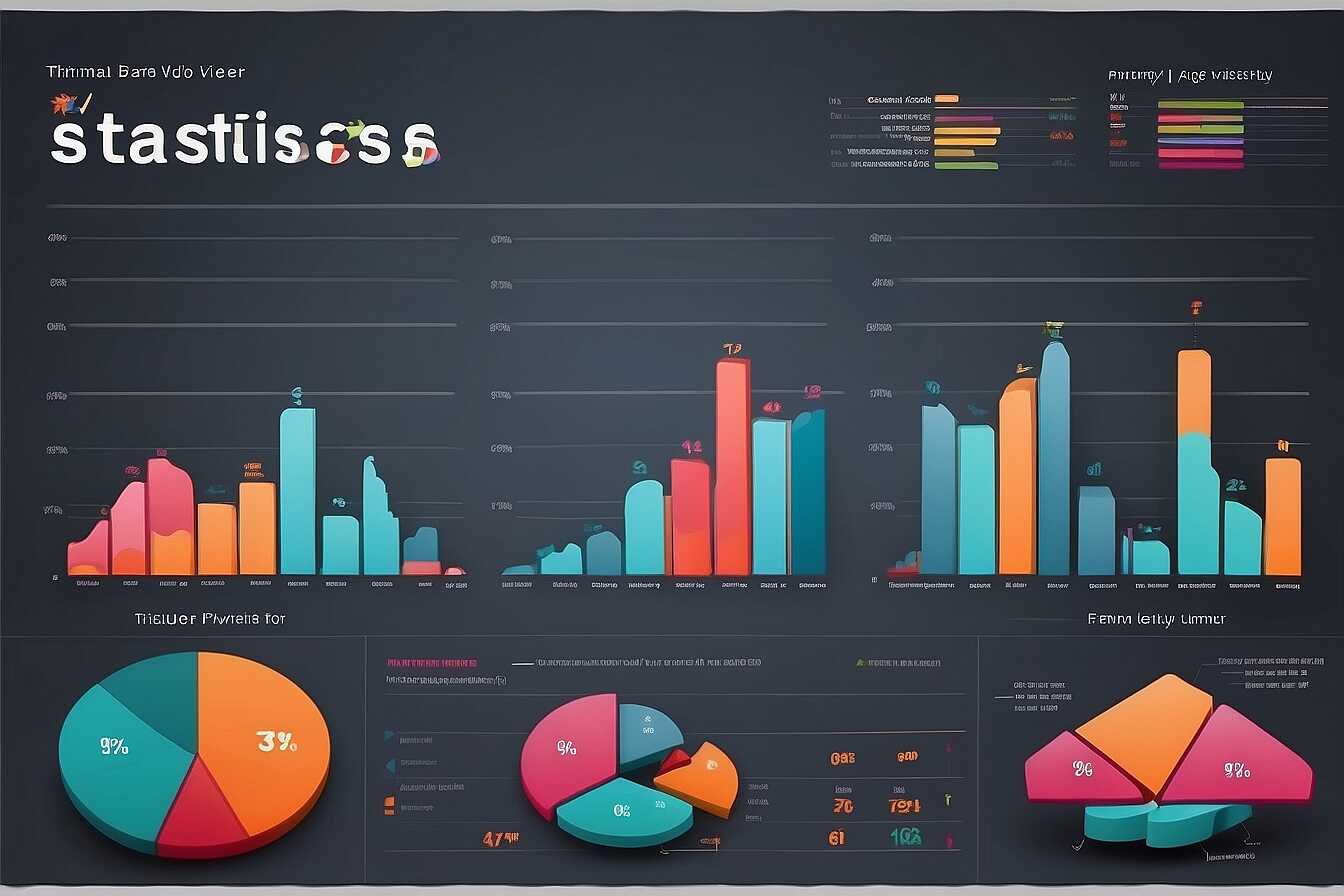Adapting your SEO strategy for mobile-first indexing search algorithms is essential for achieving better visibility in search results. As more users browse the web on their mobile devices, search engines prioritize mobile-friendly content in their rankings. At Metrics Rule, a technical and on-page SEO analysis firm in Vancouver, we understand the nuances of mobile-first indexing and how it impacts your site’s performance. By implementing effective strategies, we can help you enhance your website’s mobile optimization and boost your search engine rankings.
Defining Mobile-First Indexing
Mobile-first indexing refers to Google’s approach of using the mobile version of a website as the primary basis for crawling and indexing. This shift emphasizes the importance of ensuring that websites are optimized for mobile users, as over half of web traffic now comes from mobile devices. With this strategy, Google analyzes the content, user experience, and performance of mobile versions, impacting how websites rank in search results. Therefore, adapting your SEO strategies to focus on mobile-first indexing is essential for improving visibility and user engagement across different platforms.
Enhancing User Experience Through Optimization
Improving user experience through mobile optimization is crucial in today’s digital landscape. Websites like Metrics Rule illustrate how mobile-first strategies can enhance site performance and SEO results. By creating responsive designs that load quickly and are easy to navigate, businesses can significantly boost user engagement. Essential features include optimized images, efficient use of space, and quick loading times. Ensuring that your mobile site offers a seamless experience helps improve rankings and keeps visitors engaged. By focusing on these factors, businesses can successfully leverage mobile-first indexing to drive better SEO performance.
Essential Characteristics of Mobile-First Indexing You Need to Know
Mobile usability is the ease with which users can navigate and interact with your website on mobile devices. This factor is crucial for mobile-first indexing because Google predominantly uses the mobile version of a site to determine rankings. Factors influencing page speed in mobile SEO include server response times, image optimization, and the use of browser caching. Content prioritization impacts search engine rankings by ensuring that relevant information appears prominently in search results, enhancing user engagement and dwell time. In 2025, understanding these elements will be essential for effective SEO strategies.
Key Factors in Optimizing Mobile Usability
To optimize mobile usability, ensure your website features a responsive design, making navigation easy on any device. Implement large buttons and accessible menus to foster a smooth user experience. Testing your site on various mobile devices is vital. Focus on minimizing loading times, as users expect pages to load quickly. Incorporating techniques like image compression can significantly enhance page speed, which is a major ranking factor in mobile-first indexing. Regular reviews and updates based on user feedback can drastically improve the reliability and performance of your mobile site.

Best Practices for Optimizing Your Website for Mobile Users
To optimize your website for mobile users, focus on responsive design solutions, which automatically adjust your site’s layout for different screen sizes. Incorporating user-friendly navigation is essential to ensure that visitors can easily find what they need. Research shows that as of 2023, over 60% of internet users prefer mobile-friendly websites. This reliability in user experience can significantly enhance your search rankings. Address technical aspects like fast loading times and efficient indexing to improve overall website performance metrics. Utilizing mobile optimization techniques will not only boost user retention but also help your site rank better with Google’s mobile-first indexing algorithms.
Importance of Responsive Design for Mobile Optimization
Responsive design is crucial for effective mobile optimization. It ensures that your website can handle different devices and screen sizes seamlessly. This design philosophy provides a great user experience by adapting content and layout to suit mobile users. For instance, an ecommerce site should include easily accessible product information and checkout options. Focusing on reliable responsive solutions enhances navigation, minimizes bounce rates, and improves overall engagement. By 2025, it’s projected that almost 80% of web traffic will come from mobile devices, underscoring the need for websites to be optimized accordingly. The integration of technical features such as flexible images and CSS grid layouts will also enhance mobile performance.
Key Statistics for Optimizing Your Digital Presence
- 60% of web traffic now comes from mobile devices.
- Over 50% of users abandon websites that take more than 3 seconds to load.
- 40% of users will switch to another website if yours isn’t mobile-friendly.
- Search engines prioritize mobile-optimized pages in rankings.
- 75% of mobile users expect a consistent experience across all devices.
- Google says mobile-friendly designs improve conversion rates by 20% on average.
- Nearly 85% of users rely on search engines to find local businesses.

Strategies for Developing Engaging Mobile-Friendly Content
Creating mobile-friendly content is essential because it enhances user engagement and retention. Mobile-friendly content ensures that your website is easily accessible and navigable on smaller screens. By focusing on user engagement strategies, businesses can foster better interactions and reduce bounce rates. For instance, concise and engaging material is crucial as mobile users often prefer quick, digestible information. Research indicates that more than 50% of web traffic in 2023 comes from mobile devices, highlighting the need to optimize for mobile audiences. This data underscores the importance of technical SEO elements that support mobile performance, such as fast loading times and responsive design.
Techniques for Optimizing Content for Mobile Devices
When optimizing content for mobile devices, businesses should focus on several proven techniques. First, ensure your titles and headers are short and informative, capturing the essence of the content within ten words. Next, utilize bullet points and numbered lists to present information clearly and concisely. It’s also beneficial to incorporate visuals like images or infographics that support text content, as these enhance understanding and retention. Furthermore, test your site’s performance on various mobile devices to ensure reliability and efficiency. Regularly reviewing user analytics will provide insights into user behavior, helping to refine your mobile engagement strategies effectively.

Techniques to Enhance Site Speed for Mobile Devices
Enhancing site speed for mobile devices focuses on several effective techniques. First, optimizing images plays a critical role. You can reduce file sizes through compression without losing quality. Use formats like WebP for better compression. Second, minimizing code is essential. Remove unnecessary spaces, comments, and characters in HTML, CSS, and JavaScript files. Third, utilize asynchronous loading for JavaScript to ensure it doesn’t block rendering. These methods improve mobile performance and ensure a better user experience. A reliable site speed contributes significantly to crawling and indexing efficiency.
Implementing Lazy Loading for Images
Lazy loading is a proven technique for enhancing mobile device performance. This method delays loading images until they are needed, improving initial load times significantly. Instead of loading all images at once, the browser only fetches images as they enter the viewport. This approach not only enhances site speed but also reduces bandwidth usage, especially for users with limited data plans. Implementing lazy loading can lead to faster page loads, which is crucial for mobile users who value quick access to information. Alongside other optimization strategies, lazy loading delivers impressive results in user satisfaction and engagement.
Advantages of Adjusting Your Approach for Mobile Users
- Your website can rank higher in search engine results with mobile-first optimization.
- You reach a broader audience by engaging mobile users effectively.
- Increased user engagement leads to more time spent on your site.
- Mobile-friendly sites see higher conversion rates on key actions.
- Improved user experience leads to positive brand perceptions.
- Adapting to mobile-first indexing can future-proof your SEO strategies.
- You can gain a competitive edge over less optimized competitors.

Leveraging Local SEO to Boost Mobile Search Visibility
Local SEO strategies enhance mobile search visibility by prioritizing location-based searches. By optimizing Google My Business (GMB), businesses can ensure they appear in local search results. Also, ensuring reliable NAP (Name, Address, Phone) information across platforms boosts credibility. In 2025, effective GMB optimization includes maintaining reviews and providing accurate business details, which are essential for attracting nearby customers. Research shows local SEO can increase conversion rates by up to 70%, making it a powerful tool for e-commerce.
Effective Google My Business Optimization Techniques
Optimizing your Google My Business profile is vital for improving local visibility. Essential techniques include ensuring consistent NAP information across online platforms, which enhances trust and ranking. Uploading high-quality images showcases your business, attracting nearby searchers. Regularly updating your business hours ensures users can easily visit or contact you. Gathering and responding to reviews positively influences future customers. Utilizing GMB features like posts and Q&A further engages visitors. In Vancouver, local SEO specifically enhances mobile search experiences, providing high-quality and reliable connections to potential clients.
Assessing SEO Performance Metrics for Mobile Optimization
To successfully adjust to mobile-first indexing, SEO professionals must track essential performance metrics. Key metrics include mobile page load time, bounce rates, and conversion rates. Analyzing these factors helps identify user experience flaws on mobile devices. Additionally, tools such as Google Analytics can provide valuable insights into user behavior across different platforms. Comparing mobile optimization metrics between search engines like Google and Bing reveals variances in their crawling and indexing strategies. This data enables targeted improvements to enhance visibility in search results. After implementing mobile optimization strategies, businesses often see a percentage improvement in search rankings, translating into increased traffic and engagement.
Essential Mobile Metrics to Enhance User Experience
Mobile page speed is one of the most crucial metrics. Studies show that users expect a page to load in under 3 seconds, or they may leave. A well-optimized mobile site features responsive design, ensuring easy navigation on smaller screens. Bounce rates indicate how effectively users stay on your site; lower bounce rates usually mean your content resonates with mobile users. Conversion rates, which measure user actions, can help businesses gauge the effectiveness of their mobile strategies. By continuously monitoring these metrics, brands like Metrics Rule in Vancouver can enhance their technical SEO efforts, ensuring strong performance in an increasingly mobile-centric digital landscape.
Target Audiences for Mobile-First Strategies
- Younger demographics, especially millennials and Gen Z, prioritize mobile usability.
- Small business owners focus on local search optimization for visibility.
- E-commerce brands must provide seamless mobile shopping experiences.
- Travel companies benefit from mobile-friendly itineraries and bookings.
- Health and wellness sectors engage users through mobile apps for convenience.
- Digital content creators reach audiences more effectively with mobile optimization.
- Restaurants leverage mobile indexing for menu accessibility and reservations.
Anticipating Future Trends in Mobile-First SEO Practices
As the landscape of digital marketing evolves, businesses must anticipate emerging trends in mobile-first SEO. Voice search optimization is becoming increasingly vital, with an estimated 50% of all searches expected to be conducted through voice by 2025. This shift underscores the need for SEO strategies that include natural language processing and conversational keywords. Additionally, integrating AI technologies can enhance SEO strategies by analyzing user behavior and improving content relevance, which in turn boosts ranking on search engines like Google and Bing.
Integrating AI Technologies in Mobile-First SEO Strategies
Integrating AI technologies is essential for enhancing mobile-first SEO strategies. AI can handle vast data sets for keyword research, enabling businesses to identify the best keywords that users are searching for. Tools powered by AI can perform real-time analysis and provide insights into user interactions on websites. As a result, businesses can create content that is tailored to meet user needs more effectively. Furthermore, AI-driven solutions can help improve website performance by automating testing processes, ensuring web pages load quickly and efficiently on mobile devices. The combination of voice search optimization and AI technologies provides a competitive edge for businesses aiming for top positions in mobile search results.
